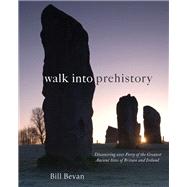
IRELAND
Uragh
Beaghmore Stone Circle Newgrange
Hill of Tara
Navan Fort
Carrowkeel
Poulnabrone
SCOTLAND
Balnuaran of Clava
Callanish
Dun Carloway
Skara Brae
Ring of Brodgar
Stones of Stenness
Maes Howe
Watch Stone
Broch of Gurness
Kilmartin
Loanhead of Daviot
Glenelg brochs
Camster Grey Cairns and Hill O'Many Staines
NORTHERN ENGLAND
Castlerigg
Mayburgh
King Arthur's Round Table
Yeavering
Mam Tor
Arbor Low
SOUTHERN ENGLAND
Ridgeway
Avebury
Stonehenge
Maiden Castle
Dartmoor
Chysauster
British Camp
WALES
Bryn Cader Faner
Tre'r Ceiri hillfort
Foel Drygarn hillfort
Pentre Ifan
Bryn Celli Ddu burial chamber
The New copy of this book will include any supplemental materials advertised. Please check the title of the book to determine if it should include any access cards, study guides, lab manuals, CDs, etc.
The Used, Rental and eBook copies of this book are not guaranteed to include any supplemental materials. Typically, only the book itself is included. This is true even if the title states it includes any access cards, study guides, lab manuals, CDs, etc.